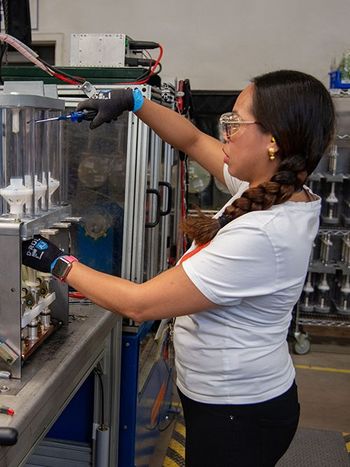The European electricity market — its malfunctions and their consequences
It all began with the Single European Act, adopted in 1986 and implemented from 1 July 1987. Its aim was to create a genuine internal market within the European Economic Community, now the European Union, in all sectors where this was possible. A directive specifying the principles and conditions of an electricity market was adopted in 1996. The directive extends beyond the European Union to include countries such as Switzerland and Norway.

by André Merlin, Honorary Chairman and founder of RTE, President of CIGRE from 2008 to 2012
The model adopted is inspired by the electricity market model already implemented in the United Kingdom and Scandinavia. The rule of third party access to the electricity network is a result of this directive, with each end customer being able to choose their supplier. This leads to a separation between what is put out to competition, i.e. production and supply, and what remains a natural monopoly: the transmission and distribution networks.
Within the European Union there is not just one electricity market, but one per Member State. These markets have gradually been linked together to pool generation capacity. The first coupling was carried out on the initiative of RTE in 2006, between the French and Dutch power exchanges. In 2024, the markets will be coupled beyond the 27 countries of the European Union (see figure).

Map of coupled electricity markets in Europe
source ENTSOE
With national markets linked in this way, the European markets as a whole constitute the largest electricity trading zone in the world.
Decarbonising electricity, a major challenge for Europe
To combat global warming, the European Union set itself some ambitious targets for 2020 in the 2009 European Directive: to reduce greenhouse gas emissions by 20% compared to 1990 levels, to achieve a 20% share of renewable energies in the European energy mix, and to achieve energy savings of 20%. These renewable energies are mainly hydroelectric power and intermittent wind and solar power, with biomass, geothermal and methanisation making a very limited contribution.
This directive did not take account of nuclear energy, which at the time represented a significant proportion of the decarbonised electricity produced in Europe (30% in 2009 and 20% in 2024).
The need for controllable production
We need to be aware of the difference between decarbonised energies that can be controlled, such as nuclear and hydro power, and decarbonised energies that are intermittent and therefore cannot be controlled, such as wind and solar power. These non-dispatchable energies do not necessarily enable electricity to be produced when it is needed on the grid. What's more, they do not contribute to controlling the operation of the interconnected electricity system, as controllable sources can. They do not regulate frequency, voltage or current, as controllable generation can. Research is underway to change this situation, but so far without any convincing results. Their behaviour in the event of an incident on the grid can have negative consequences for grid stability and lead to a blackout.
As a result, since they do not provide the same services to the interconnected electricity system, these controllable and non-controllable generation resources do not have the same economic value.
The consequences of the Green Deal for the electricity market in the European Union
After this historical review, let's move on to the current situation. The target of 20% renewable energy by 2020 was revised upwards in 2018 and again in 2024 as part of the European Union's Green Deal. The aim is to achieve a 42.5% share of renewable energy in the European energy mix by 2030. This means that intermittent renewables will account for more than 50% of the European electricity mix by that date.
What impact will this have on the electricity market and, beyond that, on the operation of the interconnected electricity system? We are already seeing more and more situations where the price on the wholesale electricity market becomes negative. For example, in 2024, France experienced around 400 hours (out of 8760 hours) of negative prices. This type of situation encourages consumers who draw their power from the wholesale market to use more electricity. In 2024, for the first time in France, the amount of electricity produced by these generating facilities was such that the grid operator had to ask a certain number of wind and solar farm operators to disconnect from the grid, in order to restore the balance between electricity production and demand.
If we look ahead to 2030, given the targets set at European level, these mismatches between production and consumption will only increase. It will then be necessary to make provision for rebalancing the network in the event of surplus electricity production from these sources. As they themselves are not controllable, it will be necessary to consider disconnecting them from the grid, after exhausting all possibilities for reducing the amount of controllable generation.
As these generation resources are not involved in controlling the operation of the interconnected system, it is essential to maintain a sufficient quantity of controllable resources, to the detriment of solar and wind power, which must be disconnected in the event of overproduction. Otherwise, there is a risk of a major blackout. The blackout in Brazil in 2023 is a warning sign. We need to be extremely careful about how we guarantee the stability of a large interconnected electricity system.
The economic aspect and the impact on electricity prices
As a result of the measures taken since the adoption of the 2009 European directive on renewable energies (3x20), these intermittent energies have benefited from a derogation from the European Commission to remain outside the operation of the market. As such, they benefit from long-term contracts (of the order of 10 to 20 years) that guarantee the profitability of these investments, as well as priority access to the market over all other forms of electricity production.
In most cases, these means of production are subsidised either by the state or by consumers, generally domestic consumers (this is the case in France). This leads to an increase in the price of electricity for domestic consumers, but also for businesses.
Prices are affected by three factors:
- Compensation for direct subsidies linked to renewable energy contracts takes the form of a tax that will be paid by electricity consumers, mainly domestic consumers (in France, the TICFE, the domestic tax on the final consumption of electricity, currently around €50/MWh, which should rise to €150/MWh, or even more by 2030, if we meet the targets set out in the 2024 directive of 42.5% renewable energy in the European energy mix).
- The development of intermittent renewable energies is leading to major changes in the very structure of transmission and distribution networks. This means major investment in all these networks. For example, in France between now and 2040, these investments have been estimated at €200 billion, shared equally between the transmission and distribution networks. This will result in higher tariffs for using the public electricity network. In France, tariffs are expected to double between now and 2035, rising from €50 per MWh to €100 per MWh
- As these intermittent energies have priority over other means of electricity production, in particular nuclear or fossil fuels, the obvious result is an increase in the price of electricity, as nuclear operators are forced to lower their production levels to allow intermittent renewable energies to be used to their full capacity. The financial impact of this situation is difficult to estimate.
All this means that the price of electricity will rise sharply in France, and no doubt throughout Europe. Currently, the price of electricity in France for household customers is 250 euros per MWh, and this is set to rise to 400 euros per MWh, taking into account the additional cost of subsidies for renewable energies (150 euros per MWh). This increase would therefore be in the region of 60% at a constant euro rate. This will have an impact on the competitiveness of companies in the European Union compared with the United States in particular, and will reduce the purchasing power of households.
Alternative solutions to be developed
The development of hydropower would be the preferred solution for providing low-carbon, controllable energy. It is the most flexible way of coping with variations in demand. But the construction of new dams is difficult to envisage in Europe.
In the absence of hydropower, a combined-cycle gas or biogas plant is a rapidly available alternative solution.
If Europe wants to decarbonise its electricity in order to achieve carbon neutrality by 2050, and at the same time pursue a policy of reindustrialisation, it needs to do it differently. This electricity needs to be competitive with other regions of the world, particularly the United States. In my view, the only way to have this competitive decarbonised electricity is to develop either hydraulic or nuclear power.
Unfortunately, the capacity to develop hydroelectric power is limited in many European Union member states.
Nuclear power should not be judged solely on the basis of past technologies. With the EPR, the third generation is more efficient and safer. The fourth generation, expected by 2050 and based on fast breeder reactors, should make it possible to reuse a large proportion of nuclear waste and to use uranium 238, which is currently wrongly regarded as waste. Later, towards the end of the century, mastery of nuclear fusion will be the best solution. The remarkable progress made with lasers also suggests that they could be used to destroy nuclear waste. This research should be encouraged.
The stakes for the future of the European Union are high. If it wants to reconcile achieving both carbon neutrality by 2050 and economic growth comparable to that of the United States, it must adopt a plan for its energy future comparable to the Messmer plan implemented in France from 1973 onwards, following the first oil crisis, and abandon the forced development of intermittent, non-controllable renewable energy sources.
The European Union's industrial strategy, as set out in the Green Deal, does not take this approach. Let's hope that the new team being put in place in Brussels realises the dead-end Europe has reached in terms of energy and proposes new directions that are more likely to ensure the efficiency of its electricity market and the secure operation of its large interconnected electricity system.
Listen our Podcast on the European Electricity Market!
Dive into our AI-generated podcast, where we explore the insights of André Merlin as he examines the structural issues plaguing the European electricity market and their far-reaching consequences.
Listen here
Thumbnail & banner credit: Viri Gutiérrez on Lummi

